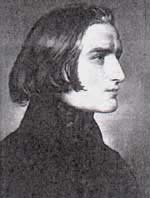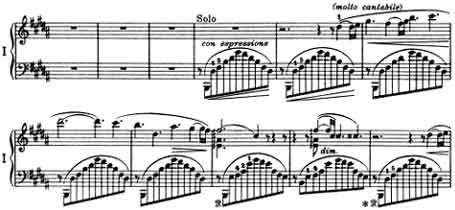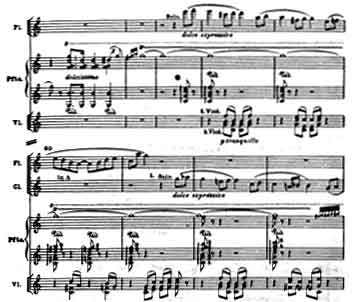
|
In the Second Movement (Quasi Adagio), Liszt introduces
a new theme. The cellos and basses lead and suggest the following
beautiful melody:
|
 |
|
Measures 1 - 4 Cellos and Basses begin a beautiful
melody. Play.
|
|
Next, Liszt takes this melody and lets the piano sing
fully; this piano part is one of Liszt's most expressive melody.
|
The next transformation takes place in the beginning
of the Fourth Movement. This time it has
been transformed into a march.
|
 |
 |
|
Measures 9 - 16 Play
piano solo with Bellini-like left hand accompaniment.
|
Measures 1 - 3 Fourth Movement
melodic theme in original key of E-flat with march-like character. Play
audio clip.
|
|
There is another fascinating transformation which
occurs: Liszt takes the descending part of the melodic theme
and uses it to create a passionate recitative by a solo cello.
|
Liszt then takes this theme and uses it in the Fourth
Movement with Bassoons, Trombones, Cellos, and Basses.
|
|
|
 |
|
Measures 35 - 36 Play
cello solo with the descending part of the melodic theme.
|
Measures 17 - 19 Play
(Bassoons, Trombones,) Cellos, and Basses in Fourth
Movement.
|
| A third theme in the Second Movement emerges at the end of the movement: while the piano is trilling away, the woodwinds (Flute, Clarinet, and Oboe) and Cello have the new theme as solo lines. It is a dolce espressivo melody. | This third theme appears in the Fourth Movement as triplets played staccato and lightly. |
 |
 |
|
Measures 55 - 63 (shown) Play
new theme with solos.
|
Play
measures 30 - 32 in Fourth Movement of trilling
theme from Second Movement.
|